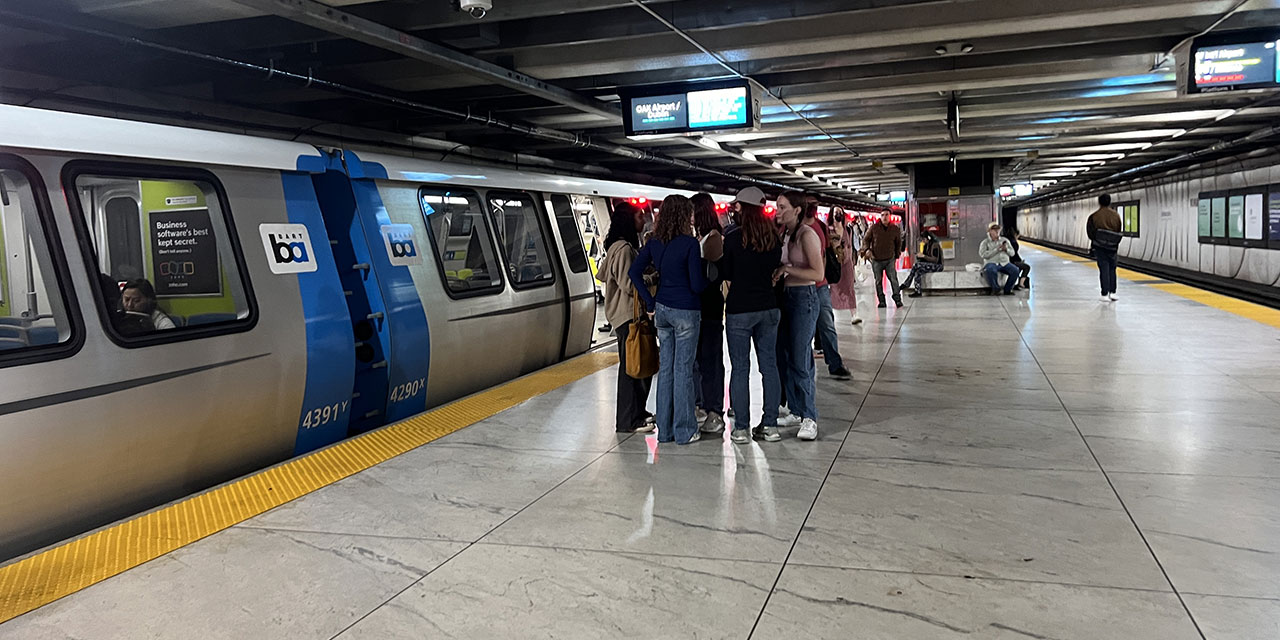
Commutes are a drag. In 2019, workers on average spent a record-high 28 minutes traveling to work, with nearly 10 percent commuting over an hour each way. During and after the pandemic, more employees worked from home, saving 72 minutes a day in commute time. Many used that time to work, exercise, and care for kids. No wonder the top reason people want to work from home isn’t hating the office—it’s hating their commute.
Long commutes can be more than an inconvenience—they can be a political problem. As American cities face a housing crisis, leaders must address their crumbling transit infrastructure, which forces people to vie for a limited pool of dwellings near the urban core instead of moving to potentially commutable areas on the outskirts of the city.
Finally, a reason to check your email.
Sign up for our free newsletter today.
Start with the human costs. Long commutes can lead to lower life satisfaction. One study by Daniel Kahneman, a Nobel Prize-winning economist, found that commuting was the least satisfying activity of the day, below housework. Commutes take people from their families, expose people to air pollution, reduce time available for exercise, and contribute to obesity and high blood pressure. People with commutes longer than 20 minutes were found to have dramatically less time for “socially oriented trips,” which means less revenue for local businesses.
Commuting also imposes economic costs, including gas, parking, train tickets, and lost time. According to one estimate, commuting consumes 10 percent of the median American salary. A shocking 23 percent of workers quit their jobs in 2018, before the rise of remote work, due to their commute. One estimate put the value at $40,000 per year of value in cutting a commute by an hour each way. The number of “super commuters,” who travel at least two hours each way, continues to rise.
Still, many employers require in-person work because of its collaborative value. Employees are more likely to accept such demands if they live near the office—which is why Peter Thiel, for example, once offered a $1,000 monthly stipend to workers who lived within a half mile of his headquarters.
In 2021, John Myers, Sam Bowman, and Ben Southwood wrote an article on the “housing theory of everything,” which places housing costs at the center of many of Western society’s ills. A crucial factor driving those costs is poor transportation infrastructure.
Consider any high-cost neighborhood in an American city. Why don’t more workers live in the cheaper outskirts and travel in? Often, it’s because they can’t—the trip would take too long. Some workers even live in their cars to avoid impossible commutes. One study of commuting patterns found that certain low-wage workers were able to live farther from the urban core only because they enjoyed the same travel time, thanks in part to better transit access. In big cities, rent can vary dramatically, meaning reducing travel time and increasing travel distances can have significant returns.
If the “housing theory of everything” is right, it should be paired with a “transit theory of everything.” Urban leaders don’t just need to build more housing; they also need to create better, faster transit that reaches the city’s edges.
In San Francisco, that would mean MUNI subways connecting Salesforce Tower, the Music Plaza, the Presidio, the Zoo, the Castro, and Chase Center—all in under 15 minutes. BART trains could bring riders from San Mateo or Oakland into the city in the same amount of time. It would also mean creating abundant parking structures to cut down on the 17 hours per year people spend searching for a spot. Making this vision real would improve commuting and inject new life into the city.
People dream of living in Tokyo or New York, not Bangalore or Jakarta. The difference isn’t just density or housing, which all four cities have. It’s in part transit that is fast, frequent, dense, and thoughtfully designed. That’s the transit theory of everything. More cities should embrace it.
Photo by Smith Collection/Gado / Contributor via Getty Images
City Journal is a publication of the Manhattan Institute for Policy Research (MI), a leading free-market think tank. Are you interested in supporting the magazine? As a 501(c)(3) nonprofit, donations in support of MI and City Journal are fully tax-deductible as provided by law (EIN #13-2912529).
Source link


















